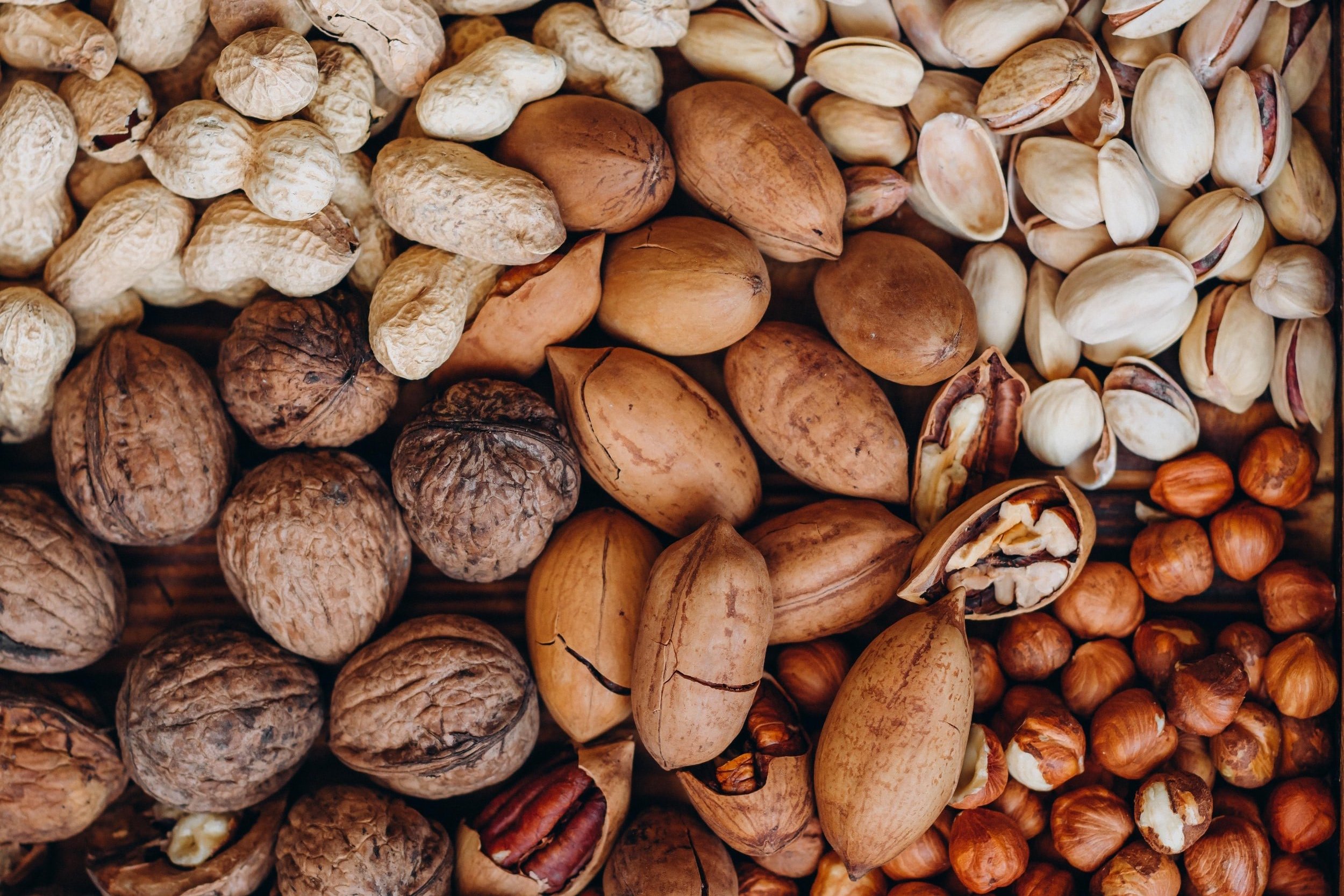
Carbohydrates
Carbohydrates can be found in the diet in many forms, ranging from whole grains such as rice and quinoa all the way to sweets such as cakes and cookies. Obviously, some sources of carbohydrates are healthier than others, but it does not hurt to treat yourself sometimes! This article will dive into the role of dietary carbohydrates within the body, beginning with the classifications of carbohydrates, their functions within the body, and ending with sources and the recommended daily intake of carbohydrates.
Carbohydrates consist of carbon, hydrogen, and oxygen molecules and are classified according to their structure. Simple carbohydrates include mono- and disaccharides. Monosaccharides cannot be broken down any further and are commonly referred to as glucose, fructose, and galactose. Disaccharides are two monosaccharides that have been joined together and consist of lactose, maltose, sucrose, and trehalose. Complex carbohydrates contain more than two monosaccharides and are further classified between oligosaccharides and polysaccharides. Humans do not have the digestive enzymes needed to break down oligosaccharides, so they commonly cause gut discomfort such as bloating and/or cramping. Polysaccharides are sugars such as starch, glycogen, and cellulose. The main two forms of carbohydrates found within the body are glucose and glycogen. Glucose is transported in the bloodstream and can enter many pathways to yield products such as energy and RNA (1). Glycogen is the stored form of glucose and is found mainly in skeletal muscle and the liver. During high-intensity exercise, glucose is the primary source of energy for the body. Therefore, it is important to have an adequate supply of carbohydrates within the body during these types of exercise bouts.
Carbohydrates also serve as the primary source of fiber in our diets. There are many forms of fiber but can be grouped altogether as they all serve common functions in the body. For example, they provide food for the microbiome of the gut (2), which promotes health of the gut-brain axis, slows the digestion process which increases satiety as well as prevents a rapid rise in insulin levels, lowers serum cholesterol, and may also lower serum triglycerides. As a whole, carbohydrates provide many benefits to the body such as the following1:
- Serve as important intermediates in metabolic pathways
- Building blocks for RNA and DNA
- Provide structure for cells and tissues
- Provide and store energy
There are various carbohydrate sources to choose from. Whole foods such as grains, legumes, fruits, and vegetables are good sources of carbohydrates to choose from. Fiber is also found in these sources. The carbohydrate intake recommendation is for carbohydrates to consist of 45 – 65% of total calories per day. For example, if you were consuming 2,000 calories per day, your intake of carbohydrates would range between 225 – 325 grams per day. Since a serving of carbohydrates is approximately a cupped handful (3), you would need to consume 7 – 9 servings of carbohydrates per day.
Written by: Siri Pederson
Last edited: 05/11/2022
-
Cosentino C, Grieco D, Costanzo V. ATM activates the pentose phosphate pathway promoting anti-oxidant defence and DNA repair. EMBO Journal. 2011;30(3):546-555. doi:10.1038/emboj.2010.330.
Simpson HL, Campbell BJ. Review article: Dietary fibre-microbiota interactions. Alimentary Pharmacology and Therapeutics. 2015;42(2):158-179. doi:10.1111/apt.13248.
Gropper S, Smith J, Carr T. Advanced Nutrition and Human Metabolism. 8th ed.; 2021.
Andrews R. Forget calorie counting. Precision Nutrition. https://www.precisionnutrition.com/ calorie-control-guide. Accessed April 18, 2022.







